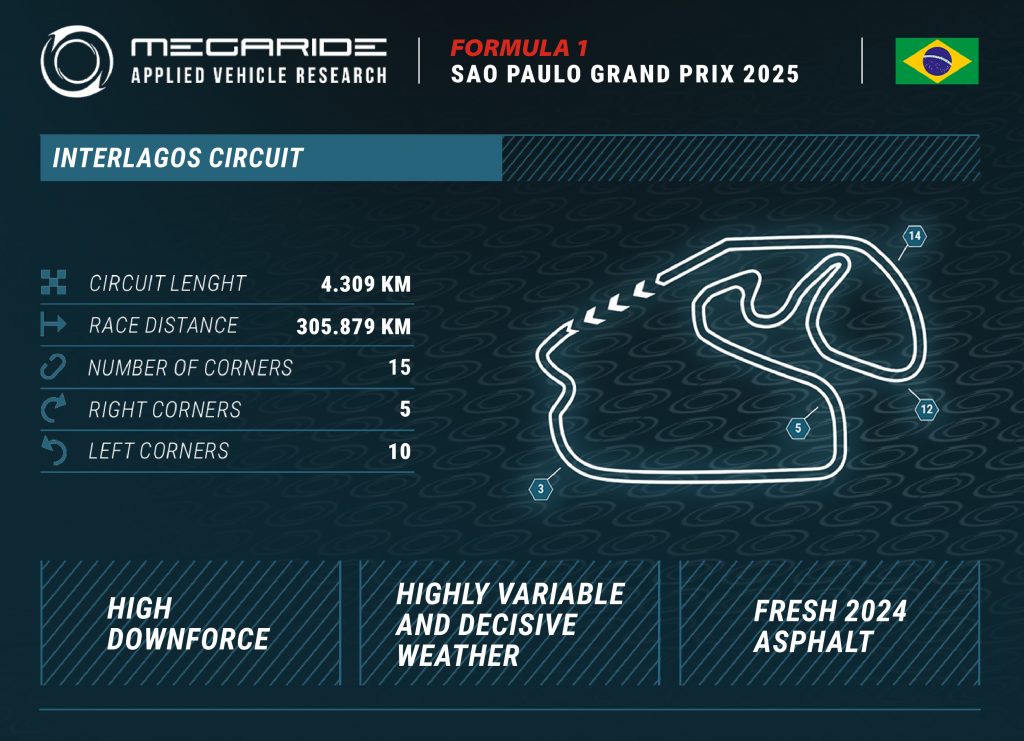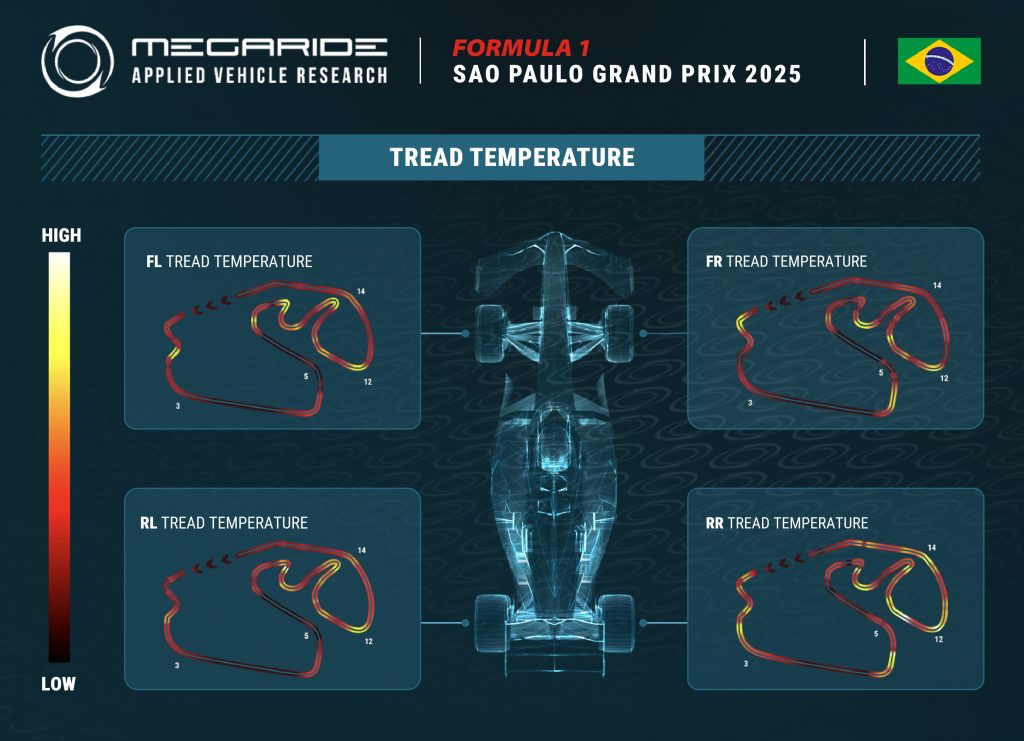
After McLaren’s return to victory in Mexico, Formula 1 moves on to the third round of the American tour at the Autódromo José Carlos Pace, better known as Interlagos, for the Brazilian Grand Prix. The circuit has often been decisive in championship battles and has produced some of the most spectacular on-track duels and comebacks in F1 history. It runs counter-clockwise and features a twisty layout with only two main straights, requiring high aerodynamic downforce. Both lateral and longitudinal loads are well balanced. The track is characterized by its undulating elevation changes and natural bumps, resulting from its unique position between two artificial lakes — hence the name “Interlagos.”

HIGH DOWNFORCE | HIGHLY VARIABLE AND DECISIVE WEATHER | FRESH 2024 ASPHALT
· Tire temperature analysis shows that the most stressed tires are on the right-hand side, particularly the right-rear. The most demanding corners are Turn 3 (after the Senna S), Turn 4, and Turns 11–12. Turn 1 also requires attention, as front-left lock-ups are common under braking.
· For this weekend, Pirelli has selected the middle range of its compounds: C2–C3–C4, unlike last year when the softer C5 compound went unused.
· The track surface was resurfaced in 2024 shortly before last year’s Grand Prix. Therefore, the asphalt is expected to remain “green,” with grip levels increasing progressively over the weekend.
Expected tire wear is medium to high, with right-side tires most stressed due to the track’s counter-clockwise direction. Weather conditions remain a key variable: the area is known for rapidly changing conditions and heavy rain showers that can strongly influence asphalt temperatures and tire management. Although Interlagos offers several overtaking opportunities, grid position and pit strategy remain critical to race outcome.
